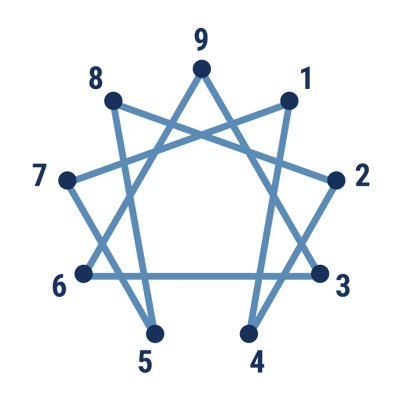In 2006, we published Wake Up and Sell. Many have wondered why our first book about the Enneagram dealt with the topic of sales. The Enneagram is first and foremost a tool for self-discovery and personal growth and development. Whether in leadership, working on a team, managing a project, working with clients or selling to prospects, understanding yourself is the first step to effectiveness in any of these areas.
In working with organizations, we have found that teaching salespeople the Enneagram gets the fastest return on investment than any other organizational effort. Without a doubt, more sales allow organizations to grow and thrive. When salespeople improve their results, the whole company benefits!
As much as I, Mary Anne, love consulting, training and coaching, to this very day it still thrills me to be sitting with a prospect or client, listening to their problems, exploring desires for their business, asking just the right question to discover what’s really going on, designing a solution and closing the deal. It’s fun, it’s thrilling, it’s real, and it matters. I clearly remember my dad asking me after my first few years as a sales trainer, “When are you going to get a real job?” It was in my automatic response to him when I truly understood the importance that selling and being a sales trainer holds. My response was simply, “Nothing happens in business until someone sells something.”
Selling is an art that takes skill, integrity, and wisdom. It is a profession where effective, open communication is paramount, where relationships are forged, problems are solved, and possibilities become reality.
In this blog at the beginning of the next several months, we will highlight a few sales strategies for the different Enneagram types. This time we’re highlighting the Heart or Image types, types 2, 3 and 4. These three types share the way they process and filter information through the heart or emotional center. They are concerned with relationships, how one perceives others, and how others perceive them.
Here are some sales strategies for these types. We’d love to know what you would add or how these strategies impact you.
TYPE 2 – THE GIVER
- Stay objective when working with prospects or clients and remember that a “no” is not a reflection of you as a person; it is just a decision to not buy the services proposed. It’s not personal even though it may feel personal.
- Let the prospect or client describe what will meet their needs. Ask questions to elicit their desires or needs. This is a serious trap for someone who believes that they know what someone else needs.
- Be careful about how much time you spend on building a relationship when on a sales call. Always have a desired outcome that you want from a sales call and follow your sales process. That will help you stay on track for what you need to accomplish.
- Be very clear as to what the company’s offerings are and don’t overpromise because you are thinking that you can fix it later.
TYPE 3 – THE PERFORMER
- Slow down and learn to relax and be present.
- Learn that there is a difference between who you are as a person and what you do (your role). Learn how to distinguish between the two.
- Follow through your sales process without rushing so that you don’t miss steps or important details.
- Only promise what you actually can deliver.
TYPE 4 – THE ROMANTIC
- Stay focused on the desired outcomes of a sales call.
- Don’t take interactions so personally. Be objective and strategic when dealing with others.
- Balance the amount of time you spend relating or dealing with feelings versus time moving through your sales process and getting to the desired outcomes.
- Be aware of the beliefs you hold regarding being a salesperson. Make sure your beliefs support selling success.
For the rest of the strategies contained in this book for these types, either let us know which you want or pick up a copy of the book.
Stay tuned over the next couple months as we cover sales strategies for the other types.




